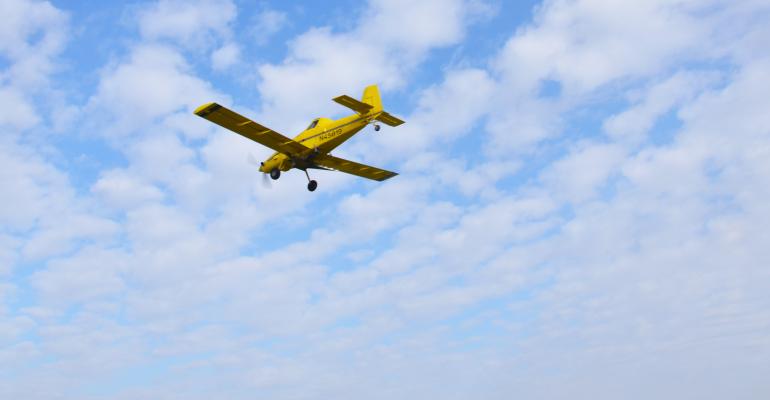Move up seeding date for annual ryegrass

Corn Pest Beat: Consider all options before seeding annual ryegrass ahead of corn.
Aug 15, 2018
I plan to go with annual ryegrass and crimson clover ahead of corn for 2019. What are my options for seeding this mix in a timely fashion into 2018 soybean land? Will growing a cover crop affect insect control strategies for 2019?
The Indiana certified crop adviser panel answering this question includes Betsy Bower, agronomist, Ceres Solutions Cooperative, Lafayette; Steve Gauck, sales agronomist, Beck’s, Greensburg; and Dan Ritter, agronomist, Dairyland Seed, Wabash.
Bower: Seeding method depends on recommended seeding date and anticipated soybean harvest date.
I prefer seeding any cover crop with a drill so that seed-to-soil contact is maximized. However, depending on recommended latest seeding date — Sept. 15 in northern Indiana and Oct. 1 in southern Indiana — soybeans may not be harvested yet. Consider alternative seeding methods, such as a broadcast application.
Apply when 10% of soybean leaves have fallen. Broadcast applications involve an airplane, helicopter or high-clearance rig. Apply a few days before an expected rainfall. Increase seeding rate over drilling
Consider a vertical-tillage pass right after the broadcast spreader application on recently harvested soybeans to improve seed-to-soil contact.
Before you seed, consider weed control products used earlier to see if any might affect cover crop establishment.
Will growing cover crops affect insect control strategies for 2019? For the most part, no. We always need to be diligent about understanding cutworm or armyworm flights in spring. Purdue University has a black cutworm trap network through Purdue’s Pest and Crop Newsletter.
Gauck: Early planting helps ensure success in getting annual ryegrass established. If soybean harvest will be early, I prefer drilling. The next option would be broadcasting and using a vertical-tillage tool to work seed in. If it looks like harvest or seeding will not happen until mid-October, aerial application will be your option. You need rain to get seed germinated. Apply when 50% of soybean leaves have turned yellow.
Watch black cutworm moth flights next spring to determine if an insecticide is warranted. Timing of when you terminate the cover crop has a lot to do with insect pressure. No insecticides control slugs. Spraying an insecticide may kill beneficial insects that eat slugs.
Ritter: Direct drill for the best chance for a good stand and reduced seed cost. A second option is broadcasting with very shallow tillage. This
offers speed of seeding and a good seedbed. It still has issues with time of establishment. The third option is aerial application, which offers the least desirable seedbed and higher seeding cost. Establishment of the cover crop should be earlier, as it can be seeded prior to soybean harvest.
The seeding method decision largely depends on the operator and their cover crop philosophies. Some want the cover crop growing in the field as soon as possible; others can wait and shoot for a more definite establishment later. I may lean toward shallow incorporation. It allows an operator to quickly seed the cover crop and develop a semi-favorable seedbed.

